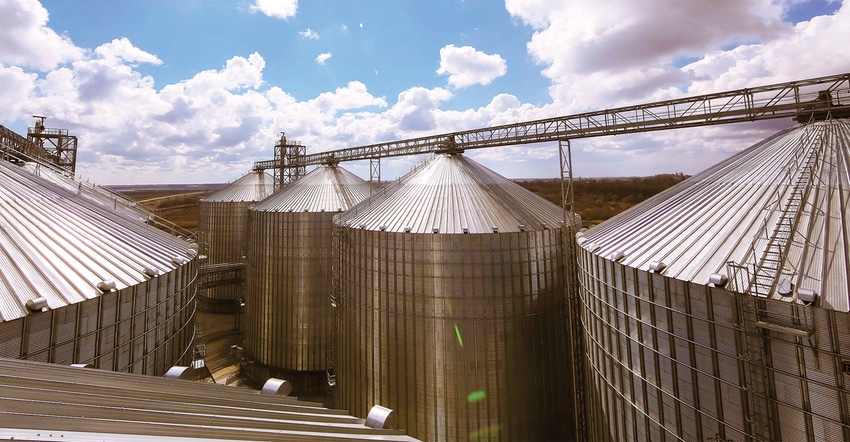
After an extended bearish corn price environment, things are looking brighter for U..S corn producers.
On the heels of huge Chinese corn buying, adverse August weather across significant parts of the Midwest, and, most recently, a surprisingly tight Sept. 1 stocks report, nearby December corn futures this week surged to 3.85 ½, which is the highest price for the contract in nearly 7 months.
In addition, CFAP 2.0 payments were announced several weeks ago, amounting to roughly 23 cents/bu. for corn on the producer’s 2020 Actual Production History (APH). Furthermore, corn basis levels in many areas have firmed recently, and in a number of markets, are extremely strong during the post-harvest timeframe.
Risk of doing nothing
Do prices have to stay up at these elevated levels? Is it wise to sit back and assume that there is minimal risk of declining prices? Conversely, is it wise to sell the whole crop and not leave any upside flexibility?

What are some things that a producer could do to limit price risk and keep upside in an economical way without getting caught up in the emotional exercise of attempting to guess price direction?
To answer that, let’s consider (1) a producer who takes his corn to the elevator – Elevator Eddie, and (2) a producer that has on-farm storage – Farm Storage Frank.
Elevator Eddie
Many producers will put corn into commercial storage in hopes that a futures rally will eventually come along, and the grain can be sold at a much higher price than at harvest time. What is the cost to do it this way? Let’s assume there is a 12-cent drop charge and a 3-cent monthly fee thereafter. If Elevator Eddie harvested corn in October and stored it until the end of February, he would have total storage costs of 27 cents. In addition, corn is normally shrunk an extra point if it is stored, amounting to roughly 5 cents (example, Fall cash corn at $3.50). Assuming he is borrowing money at 4%, his interest costs would be 6 cents. Adding it all up, the total cost to store corn until the end of February would be 38 cents/bu. On top of all that, there is no floor in place should prices fall, and no cash flow.
A better way
Instead of wrapping up all of those costs in hopes of rally with no real risk management employed, what’s a solid alternative for Elevator Eddie? Harvest corn basis in most markets is currently a little stronger than normal, futures carries are decent but not great, and December futures prices are at the highest levels since early March. He could sell the cash corn at harvest, and at the same time, purchase call options that give the ability to benefit if prices rally (short U.S. crop, China buying, South America weather issues). March 4.00 corn calls currently have an option premium of 14 cents/bu. with March futures trading at $3.89 as of the Friday close. This cost is approximately 1/3 of the total costs of physically storing grain at the elevator, and yet the calls still allow Elevator Eddie to participate in a potential higher price environment. Furthermore, he would have cash flow, and if prices decline, the most that he could lose would be the option premium and fees (compared to 38 cents if he stored the crop).
Farm Storage Frank
Too often, on-farm storage is utilized as more of a speculation tool (storing grain unprotected with hopes prices will rally) rather than as an asset to capture futures carry and post-harvest basis improvement. In the past, Farm Storage Frank had experienced storing grain for 9 months and then emptying out his bins at a price no better than when it was put in, and sometimes even far lower. In hopes of higher prices that never came or were never acted on, he had accrued significant interest costs as well as moldy/damaged corn at times. What was the key that he missed over those years? Answer- he did not Sell the Carry! He saw the higher deferred prices but assumed that those far-off prices would stay up there or move higher yet. So how can he sell the carry this year? If he’s tributary to certain markets that are very strong (ex. export market) he could forward sell the deferred cash price and buy call options on the majority for upside (see Elevator Eddie example). March delivery on the Illinois River is 5 cents over March futures or a cash price of 3.94 (compared to 25 cents under Dec futures for October) = 30 cents in basis improvement. The December to March futures carry is 9 ½ cents, so the net gain in basis and carry is 39 ½ cents compared to 6 cents in interest costs for storing on-farm for 5 months.
If Frank is in an area that has weaker deferred cash basis levels, he could sell March futures (or do a March Hedge to Arrive) at 3.89 and purchase call options for upside. Later on after harvest, if basis levels were still not performing very well, the futures spreads to further months (May, July, Sep) could get larger, and he could roll out further to capture more carry and raise his net price. For example, if he sold 3.89 March futures, and China made large cancellations of U..S corn, what would likely happen to futures carries? They would probably get much larger than current levels (and flat price likely would be down hard). He might be able to roll from his March hedge out to May futures at a 14-cent credit, making his net futures price 4.03 May. If basis continued to stay wide, he might have a similar opportunity by again rolling out to July futures.
On the other hand, if corn basis firmed to strong levels, Farm Storage Frank would sell the cash grain and buy back his futures hedge (or set his basis on the Hedge to Arrive).
What about you?
With the recent positive developments in corn futures, along with stronger basis levels in many markets, and significant government payments, the U.S. farmer has a great opportunity. Assuming that prices will not decline from current levels, or on the other end, believing corn futures can’t rally very far, can be deadly in a marketing plan. There are proven ways of obeying the cash market signals and defending the downside while allowing for upside participation that are superior to the emotional conventional wisdom way of marketing. Don’t pass up the opportunity!
Contact Advance Trading at (800) 664-2321 or go to www.advance-trading.com
Information provided may include opinions of the author and is subject to the following disclosures:
The risk of trading futures and options can be substantial. All information, publications, and material used and distributed by Advance Trading Inc. shall be construed as a solicitation. ATI does not maintain an independent research department as defined in CFTC Regulation 1.71. Information obtained from third-party sources is believed to be reliable, but its accuracy is not guaranteed by Advance Trading Inc. Past performance is not necessarily indicative of future results. Examples are used for illustrative purposes and should be considered hypothetical.
The opinions of the author are not necessarily those of Farm Futures or Farm Progress.
About the Author(s)
You May Also Like






